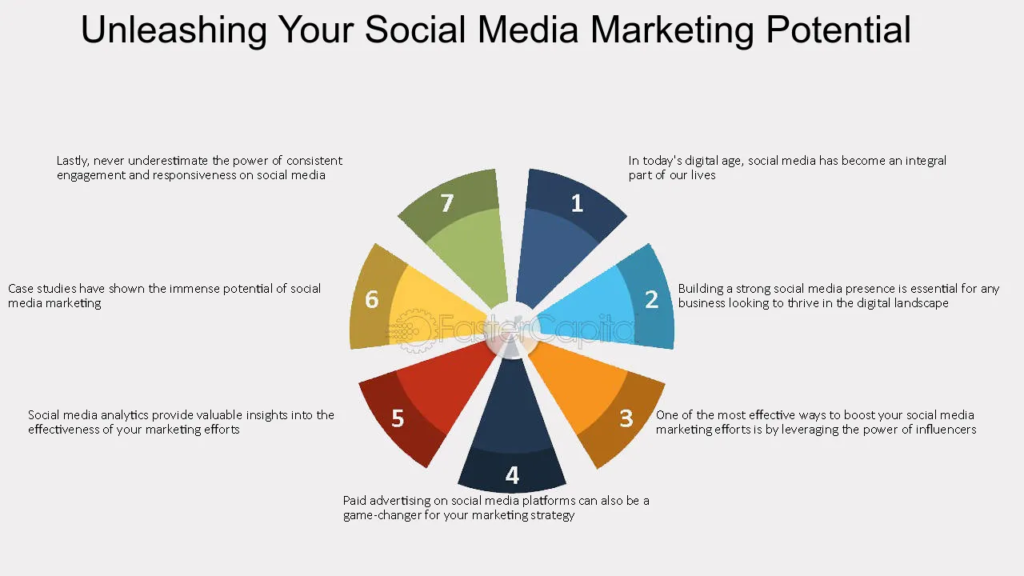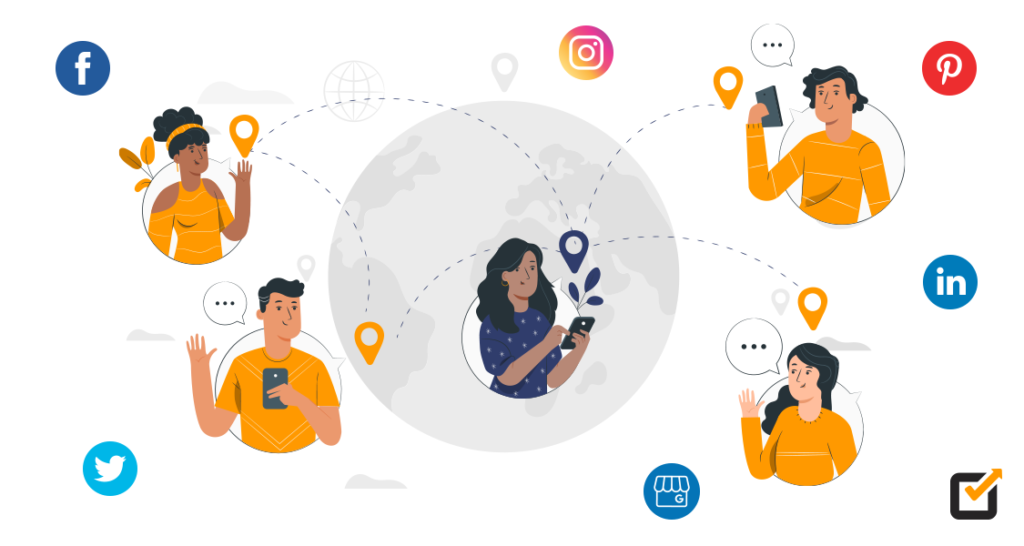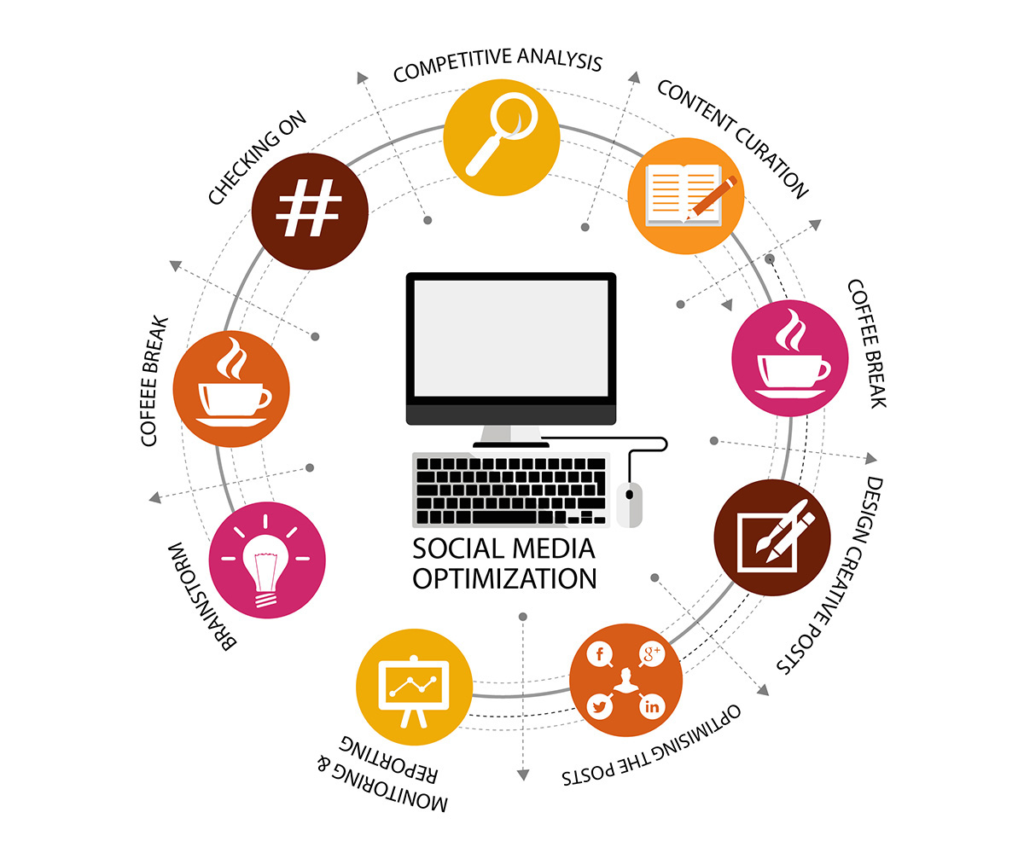In the fast-paced digital era, social media has become an indispensable tool for brands seeking to expand their reach and foster meaningful connections with their audience. This blog embarks on a journey to unravel the profound significance of social media in amplifying brand visibility. With an increasingly competitive landscape, brands are compelled to employ strategic growth social media hacks to stand out amidst the digital noise. The purpose of this blog is to illuminate the art and science behind social media growth, providing readers with actionable insights and hacks to propel their brand to new heights.
Prepare to delve into the dynamic realm of social media and unlock the keys to maximizing your brand’s reach. In today’s fast-paced digital landscape, standing out isn’t just about posting regularly—it’s about working smarter. That’s where AI tools come into play. These intelligent solutions are changing the game by helping brands boost engagement, personalize content, and streamline their strategies. In this guide, we’ll uncover essential social media growth hacks, powered by AI, to help you attract more followers, drive interaction, and elevate your online presence with precision.
Ways To Optimize Content for Engagement
In the ever-evolving landscape of social media, content is the cornerstone of audience engagement. To maximize your brand’s reach, it’s crucial to craft content that resonates deeply with your audience. This section explores key strategies for optimizing content to foster engagement.
A. Crafting Shareable and Relatable Content
- Understanding Your Audience:
- Delve into the interests, preferences, and behaviors of your target audience to tailor content that strikes a chord.
- Embracing Trends and Virality:
- Stay attuned to current trends and capitalize on viral content formats, encouraging users to share and amplify your message.
- Injecting Personality:
- Infuse your content with the unique personality of your brand, creating a relatable connection with your audience.
B. Leveraging Visual Elements and Multimedia
- Eye-Catching Visuals:
- Utilize compelling images, graphics, and videos to capture attention and convey your message effectively.
- Interactive Multimedia:
- Incorporate interactive elements, such as polls, quizzes, and dynamic graphics, to enhance user engagement.
- Consistent Brand Aesthetics:
- Maintain a cohesive visual identity across platforms, reinforcing brand recognition and credibility.
C. Utilizing Storytelling Techniques to Captivate the Audience
- Narrative Structure:
- Craft narratives that unfold seamlessly, capturing the audience’s attention and guiding them through a compelling story.
- Emotional Resonance:
- Evoke emotions through your storytelling, forging a deeper connection and leaving a lasting impact on your audience.
- User-Centric Approach:
- Center your stories around the experiences and perspectives of your audience, making them active participants in your brand narrative.
By mastering the art of crafting shareable and relatable content, leveraging visual elements, and employing storytelling techniques, your brand can create a captivating digital presence that resonates with and engages your audience.

The Strategic Use of Social Media Platforms
In the vast landscape of social media, strategic platform selection and tailored content are paramount for a brand’s success. This section delves into the nuances of choosing, tailoring, and maximizing platforms to optimize your brand’s reach.
A. Choosing the Right Platforms for Your Brand
- Audience Analysis:
- Conduct a thorough analysis of your target audience to identify the platforms they frequent. Align your brand with platforms that resonate with your demographic.
- Platform Alignment with Brand Goals:
- Select platforms that align with your brand’s goals and values. Whether it’s the visual appeal of Instagram, the professional landscape of LinkedIn, or the trending content on TikTok, choose wisely.
- Competitor Benchmarking:
- Evaluate where your competitors thrive and identify gaps or opportunities. Strategically position your brand on platforms where you can outshine the competition.
B. Tailoring Content for Platform-Specific Audiences
- Understanding Platform Dynamics:
- Familiarize yourself with the unique features and dynamics of each platform. Tailor content to match the expectations and behaviors of users on each specific platform.
- Optimizing Content Formats:
- Adjust your content formats to suit the strengths of each platform. From visually appealing images on Instagram to concise messages on Twitter, adapt your approach accordingly.
- Consistent Brand Messaging:
- While adapting content, maintain a consistent brand voice and messaging across platforms. This builds a cohesive brand identity regardless of where your audience engages with you.

Maximizing the Potential of Emerging Platforms
- Early Adoption Advantage:
- Keep an eye on emerging platforms and trends. Early adoption can provide your brand with a significant advantage and help you establish a strong presence before the competition.
- Experimentation and Innovation:
- Embrace a culture of experimentation on emerging platforms. Test different content strategies, engage with your audience, and innovate to discover what resonates best.
- Monitoring and Adaptation:
- Continuously monitor the performance of your brand on emerging platforms. Be prepared to adapt your strategy based on audience feedback and evolving platform features.
By strategically choosing platforms, tailoring content, and embracing emerging trends, your brand can navigate the diverse social media landscape with precision, effectively reaching and engaging your target audience.

Building and Nurturing an Engaged Community
Building an engaged community is the heart of social media success. This section outlines essential strategies to foster a vibrant and interactive community around your brand.
A. Engaging with Your Audience Through Comments and Messages
- Timely Responses:
- Prioritize timely responses to comments and messages. Prompt engagement enhances the sense of community and establishes a responsive brand image.
- Personalization:
- Personalize your responses to make your audience feel valued. Address users by name and tailor your interactions to their specific inquiries or comments.
- Encouraging Dialogue:
- Initiate and participate in conversations. Encourage your audience to share their thoughts and experiences, creating a two-way communication channel.
B. Running Contests, Polls, and Interactive Campaigns
- Contests for Participation:
- Organize contests that encourage user participation. Whether it’s photo contests, caption challenges, or creative submissions, incentivize engagement with exciting rewards.
- Insightful Polls:
- Conduct polls to gather insights and opinions from your audience. Use the data to tailor your content and offerings based on the preferences of your community.
- Interactive Campaigns:
- Launch interactive campaigns that require user involvement. This could include challenges, quizzes, or collaborative projects that unite your community in a shared experience.
C. Collaborating with Influencers and Brand Advocates
- Identifying Key Influencers:
- Identify influencers whose values align with your brand. Collaborate with influencers to leverage their reach and credibility in your community.
- User-Generated Content (UGC):
- Encourage brand advocates to create and share content related to your products or services. User-generated content adds authenticity and acts as a powerful endorsement.
- Exclusive Collaborations:
- Collaborate with influencers and brand advocates for exclusive content or promotions. Exclusive collaborations create a sense of exclusivity within your community.
D. Hosting Virtual Events:
- Live Q&A Sessions:
- Host live Q&A sessions to directly interact with your audience. This real-time engagement builds a stronger connection and allows for immediate feedback.
- Webinars and Workshops:
- Conduct webinars or workshops on topics relevant to your audience. These virtual events position your brand as an authority and provide value to your community.
- Virtual Product Launches:
- Utilize virtual platforms for product launches. Engage your community by offering sneak peeks, behind-the-scenes content, and interactive elements during the launch.
By actively engaging with your audience, organizing interactive campaigns, and fostering collaborations with influencers, your brand can cultivate a passionate and connected community. Building and nurturing this community not only enhances brand loyalty but also transforms your audience into active advocates for your brand.

Data-Driven Optimization and Analytics
In the realm of social media, data is the compass guiding your brand’s journey. This section explores the critical role of analytics and data-driven strategies in optimizing performance and fostering continuous improvement.
A. Monitoring Analytics to Measure Performance
- Key Performance Indicators (KPIs):
- Define and monitor key performance indicators specific to your social media goals. Whether it’s engagement rates, conversion metrics, or reach, track the data that aligns with your objectives.
- Platform-Specific Metrics:
- Dive into platform-specific analytics. Understand the nuances of each platform’s metrics, from likes and shares to impressions and click-through rates.
- Audience Insights:
- Analyze audience demographics, behaviors, and preferences. These insights are invaluable for tailoring content and refining your overall social media strategy.
B. Making Data-Driven Adjustments for Enhanced Growth
- Identifying High-Performing Content:
- Identify content that resonates most with your audience. Pinpoint high-performing posts and understand the elements that contribute to their success.
- Optimizing Posting Times:
- Use analytics to determine the optimal times for posting. Schedule content to coincide with peak engagement periods, ensuring maximum visibility.
- A/B Testing:
- Conduct A/B testing on various elements such as visuals, captions, or posting frequencies. Analyze the results to make informed decisions about what resonates best with your audience.
C. Utilizing Insights for Continuous Improvement and Innovation
- Feedback Integration:
- Integrate feedback from analytics into your content strategy. Leverage positive feedback to reinforce successful approaches and learn from areas that may need improvement.
- Innovation Based on Trends:
- Stay abreast of industry trends and emerging features on social media platforms. Use insights to innovate and adapt your strategy to align with evolving user behaviors.
- Iterative Approach:
- Embrace an iterative approach to social media strategy. Regularly review and adjust your tactics based on ongoing analytics, allowing for continuous improvement and adaptation.
D. Audience Feedback and Surveys:
- Collecting Feedback:
- Encourage audience feedback through surveys and polls. Directly seek input on content preferences, platform experiences, and suggestions for improvement.
- Iterative Improvements:
- Implement iterative improvements based on audience feedback. This iterative process not only addresses concerns but also demonstrates responsiveness and customer-centricity.
- Leveraging User-generated Content:
- Monitor and leverage user-generated content (UGC) as a qualitative indicator of brand sentiment. UGC provides authentic insights into how your audience perceives and interacts with your brand.
By embracing a data-driven approach, your brand can unlock the full potential of social media analytics. Monitoring performance, making informed adjustments, and utilizing insights for continuous improvement form a dynamic cycle that propels your brand toward sustained growth and innovation in the ever-evolving landscape of social media.
Conclusion
In the dynamic realm of social media, where brand visibility is paramount, these essential social media growth hacks serve as a compass for navigating the digital landscape. Crafting shareable content, strategic platform selection, community engagement, and data-driven optimization collectively propel your brand towards unprecedented reach. As you implement these proven strategies, remember that the true essence of social media lies in fostering meaningful connections. By integrating these social media growth hacks into your social media playbook, you not only maximize your brand’s reach but also cultivate a vibrant online community. Stay agile, innovate consistently, and watch your brand soar to new heights in the ever-evolving digital sphere.



